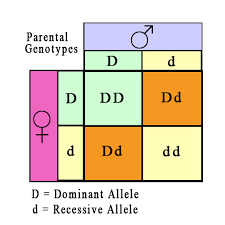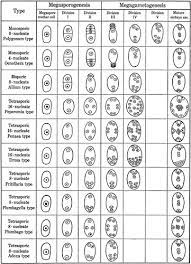Embryogeny in Monocotyledons (Triticum)
Embryogeny in Monocotyledons
The main difference between the mature embryos of monocotyledon and dicotyledon is in the number of cotyledons. The single cotyledon in monocotyledons has been regarded by many authors as a terminal structure. Wardlaw (1955) remarked: “In the dicotyledonous embryo the plumule is typically distal and is situated symmetrically between two equivale cotyledons in the monocotyledonous embryo the shoot apex occupies a lateral position in the somewhat cylindrical embryo and cotyledon terminal”. However, extensive ontogenetic work on monocot Swamy and his co-workers is Lakshmanan, 1972) has established that the epicotyl in monocotyledonous embryos is truly a terminal structure both epicotyl and cotyledon are from one and the same terminal their. The apparent lateral position of the epicotyl is due to early growth of the cotyledon, the epicotyl, alter initiation, shows slow growth.
According to Lakshmanan (1972) the chief difference between
embryos of the two groups lies in the number of cells of the terminal quadrant
of a proembryo which contribute to the formation of cotyledon(s) and epicotyl
where the number of cells forming cotyledon(s) in the two types of embryos is
same, the relative position of the cells in the quadrant may be different. In
dicotyledons it is the two opposite cells of the terminal quadrant that give
rise to the two cotyledons. In monocotyledons the number of cells involved in
cotyledon formation is variable, practically all the four cells (except a few
cells derived from one of the quadrant cells) in the philydraceae, three cells
of the quadrant in the Iridaceae, pontederiaceae and sparganiaceae, and two
adjacent cells in the Amaryllidaceae, Hydrocharitaceae and Potamogetonaceae.
Batygina (1969) has described in great detail the mode of development in Triticum.
All the four species of Triticum examined by her show a fixed pattern of
embryogeny, which is so different from that in dicotyledons and other
monocotyledons that she remarked: "... the unique mode of embryogenesis in
the Gramineae may allow the separation of a new type of embryogeny - Graminad
Type". The early part of embryogeny in Triticum is characterized by
the regular occurrence of oblique divisions embryo.
The first nuclear division of the zygote is followed by laying down of an oblique wall, cutting a small apical cell (ca) and a large basal cell. Cell cb again divides obliquely forming cells ci and m. The upper end of the wall formed during this division connects with the wall separating ca and cb. The third division occurs in cell ca, in a plane perpendicular to the first division of the zygote. Thus, T-shaped proembryo (4-celled) is formed. However, the orientation of the walls is very different from the T-shaped tetrads in either cotyledons or other monocotyledons. This characterizes the wheat embryogeny. Cell ci divides by a wall at right angles to the wall between ci and m resulting in the formation of cells n and n. Divisions of the daughter cells of ca are in the same plane as the first division in ca but at right angles to it, forming the typical quadrant q. The cell m divides vertically into two cells. Further divisions occur in various planes. Organogenesis sets in at 16-32 celled stage of the proembryo. The first organ to be initiated is the single cotyledon or scutellum. Its differentiation starts with growth in the apical-lateral region of the proembryo, involving sectors, q. m, and n. With further development a constriction appears opposite the scutellum (in the sector ca) demarcating it from the rest of the embryo. This is followed by the appearance of primordia of coleoptile and then the shoot apex close to the notch. The radicle differentiates endogenously in the central zone of the embryo. As in Najas, in Triticum also the epicotyl is formed by the terminal tier (q). Its apparent lateral position in the mature embryo is a secondary feature. It arises due to active growth of the cotyledon leaving behind the epicotyl.






Comments